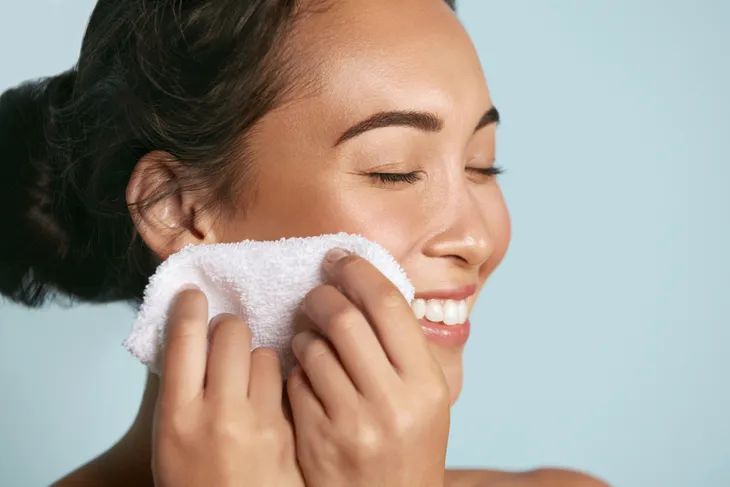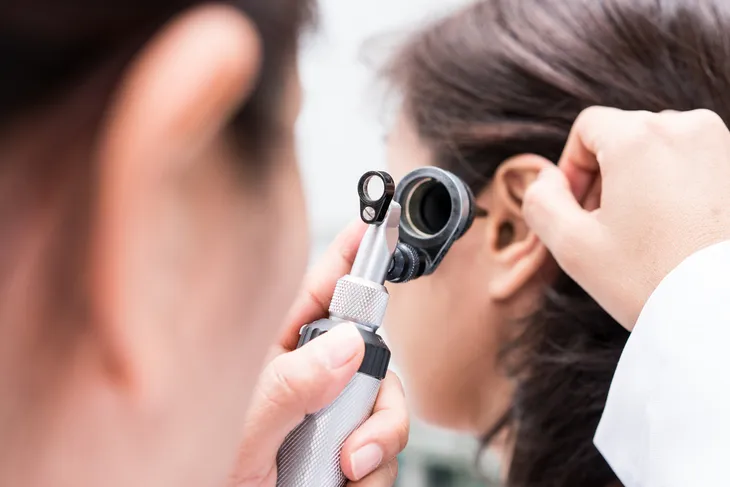Did you know your ears have their own defense system? Healthline notes that the ear canals produce cerumen, probably better known to you as earwax. And it’s for a good reason–it helps protect against “dust, foreign particles, and microorganisms,” notes the source, adding it also protects the ear canals from water irritation. Many people see removing earwax as a routine chore but the fact is, excess earwax can build up, blocking the ear canal, which requires attention. Removing excess wax is a safe practice, as long as it’s done properly.
Why Remove Earwax?
Your ears usually cleanse themselves of wax “naturally through chewing and other jaw motions,” notes Healthline. But in some cases, the ear canals produce excess wax, which can lead to problems with hearing and more (which we’ll get to soon).
Meanwhile, there are cases to be made to leave the wax alone, counters Harvard Health Publishing. For example, “earwax is not a sign of poor hygiene” despite the “ick factor.” However, it does acknowledge that some people produce more than average amounts of earwax, especially among the older population. In some cases earwax can become “harder and drier than usual,” the source adds.
How Often Should I Clean My Ears?
If your ears aren’t bothering you, then the general rule of thumb is to leave them alone. However, you can use one of the home remedies we’ll share if you’re experiencing a mild buildup — but don’t overdo it, as too little earwax can also be a problem.
More specifically, it can cause irritation, impaction, or worse. Earwax has some antibacterial properties that can guard against infection. If you’re finding that your earwax is often excessive and causing symptoms, then it’s probably best to have a healthcare professional assess it and recommend the best ways of managing it.
What Are Some Causes of an Earwax Blockage?
Medical News Today explains popular methods of removing earwax may actually be contributing to the problem. “The use of items to remove earwax or relieve itching can make the buildup worse,” notes the source. Some of these items include cotton swabs, bobby pins, and napkin corners.
These methods can push the wax deeper into the ear and also cause permanent damage to sensitive tissues, it explains. Hearing aids and earplugs may contribute to excess wax production, and the shape of the ear canal can also be a factor as it may make it more difficult for the wax to exit the ear naturally, note other sources.
Recognize Symptoms of Impaction
The Mayo Clinic says there can be a fairly wide range of symptoms that go along with too much earwax. Among the symptoms is an earache, as well as a “feeling of fullness in the affected ear,” adds the source.
Other signs of an earwax overload include tinnitus, which is more commonly known as ringing in the ears. But worse, a buildup can affect your ability to hear properly, known as impaction at this stage. It can also cause dizziness and a cough, adds the source.
Wax Color May Be a Factor
Cleveland Clinic says healthy earwax “comes in a range of colors.” The source explains certain ethnicities (African and European) are more likely to have “wet” earwax that is usually light yellow to orange-brown, while others (Asian and Native American) mainly have “dry” earwax that is whitish-gray and flaky.
It notes in either case, wax that has been hanging around longer tends to be darker in color, and contains more dust. Meanwhile, if “earwax is more of a discharge, like it contains white or greenish pus,” then you should seek medical attention. The same goes if you notice discharge on your pillow after resting. Other warning signs are if the wax is “quite obviously black,” or there’s blood apparent, adds the source.
Home Remedy: Use a Damp Cloth
WebMD says that if you choose to remove your earwax at home, then using a simple, damp cloth may do the trick if the issue isn’t serious. It notes you can “gently clean the outside of your ears” with a washcloth.
This method is recommended if it simply feels like you have too much wax in your ears. If the problem of excess buildup seems more advanced, there are other ways to deal with it (such as seeing a doctor) that we’ll get into soon.
Home Remedy: Try Some Ear Cleaning Drops
Your local pharmacy will likely also have some brands of ear cleaning solutions (sometimes called wax softeners) that are ideal for small amounts of excess wax, notes the Cleveland Clinic. It suggests looking for drops that contain hydrogen peroxide, as it’s effective in “breaking up earwax.” (Other sources note a few drops of baby oil or mineral oil may also do the trick).
The source says you should lay sideways, with the affected ear facing up. Once you’ve added the recommended number of drops (read the product guidelines), let them do their work in there for 5-minutes or so, adds the source. When you sit up, use a tissue to catch anything that leaks out.
Home Remedy: Get a Bulb Syringe
Cleveland Clinic says you can also target excess wax by using a bulb syringe (which you should be able to find at your local pharmacy) to flush it out. But it also lists a few things to keep in mind if you go this route — which is usually performed if the cleaning drops don’t work.
The source says being gentle is the key to flushing your own ears this way. That means using water that isn’t too cold or too hot, as this can end up making you feel dizzy. It also says to be gentle so the force doesn’t damage your eardrum (don’t try this method if you’ve had eardrum surgery like ear tube placement in the past, the source adds).
Let a Doctor Deal With It
Healthline explains that some of the symptoms of excess earwax, such as an earache, may indicate an infection. In this case, you should visit your doctor to have a better look to determine if the pain is from wax or something else.
“Ear infection symptoms typically develop rapidly,” the source notes. If you have pain and notice a discharge from the ears, it’s best to let a medical professional handle it. Also be sure to tell your doctor if you experience earwax impaction more than once per year, as you might want to schedule more regular professional cleanings.
Avoid Digging With Cotton Swabs
A traditional way of removing earwax has been through the use of cotton-tipped swabs. Harvard Health Publishing notes that this practice can actually damage the eardrum, or push the wax further in, making it harder to remove.
These “clumps” of earwax pushed toward the eardrum can lead to painful infection, the source adds. In 2017, clinical guidelines were updated to say people shouldn’t put anything “smaller than your elbow in your ear.” Some popular brands of cotton swabs actually print a warning on their packaging to not insert the swab into the ear canal.
Beware of Ear Candles
Ear candles (or ear coning) became another popular alternative way to remove earwax, with the heat produced supposedly drawing out wax and having other benefits such as soothing a sore throat. But Medical News Today warns against this, noting that this method is unsafe and unproven to be effective.
The source says the FDA and other health authorities have outlined potential risks of ear candling. Among them are burning of the eardrum from hot wax, as well as temporary hearing loss. Aside from ear damage, you could also accidentally start a fire, adds the source.
The Takeaway
As WebMD says, you may feel the need to clean your ears out due to the presence of earwax (especially if you can see it). But it isn’t always necessary — the ears are generally self-cleaning. In fact, as noted earlier, cleaning improperly can make the problem worse.
If you’re experiencing pain or other symptoms of impaction, then you should let a doctor handle it with special instruments that can see inside better and suck out excess wax (this also goes for children). The general consensus is that if your ears aren’t causing you any symptoms related to wax buildup, then you should leave them alone or have them cleaned during your annual doctor’s appointment.















